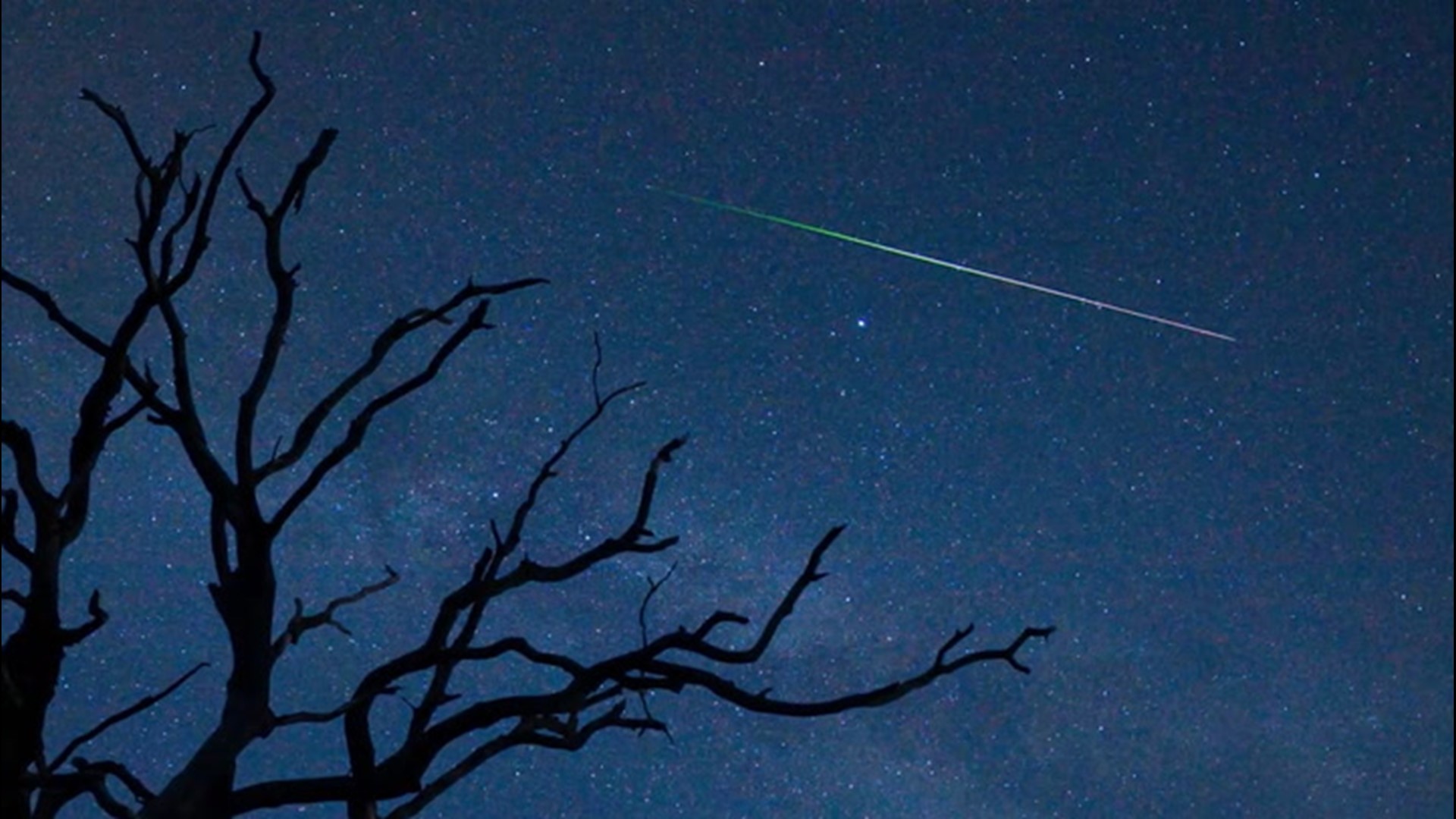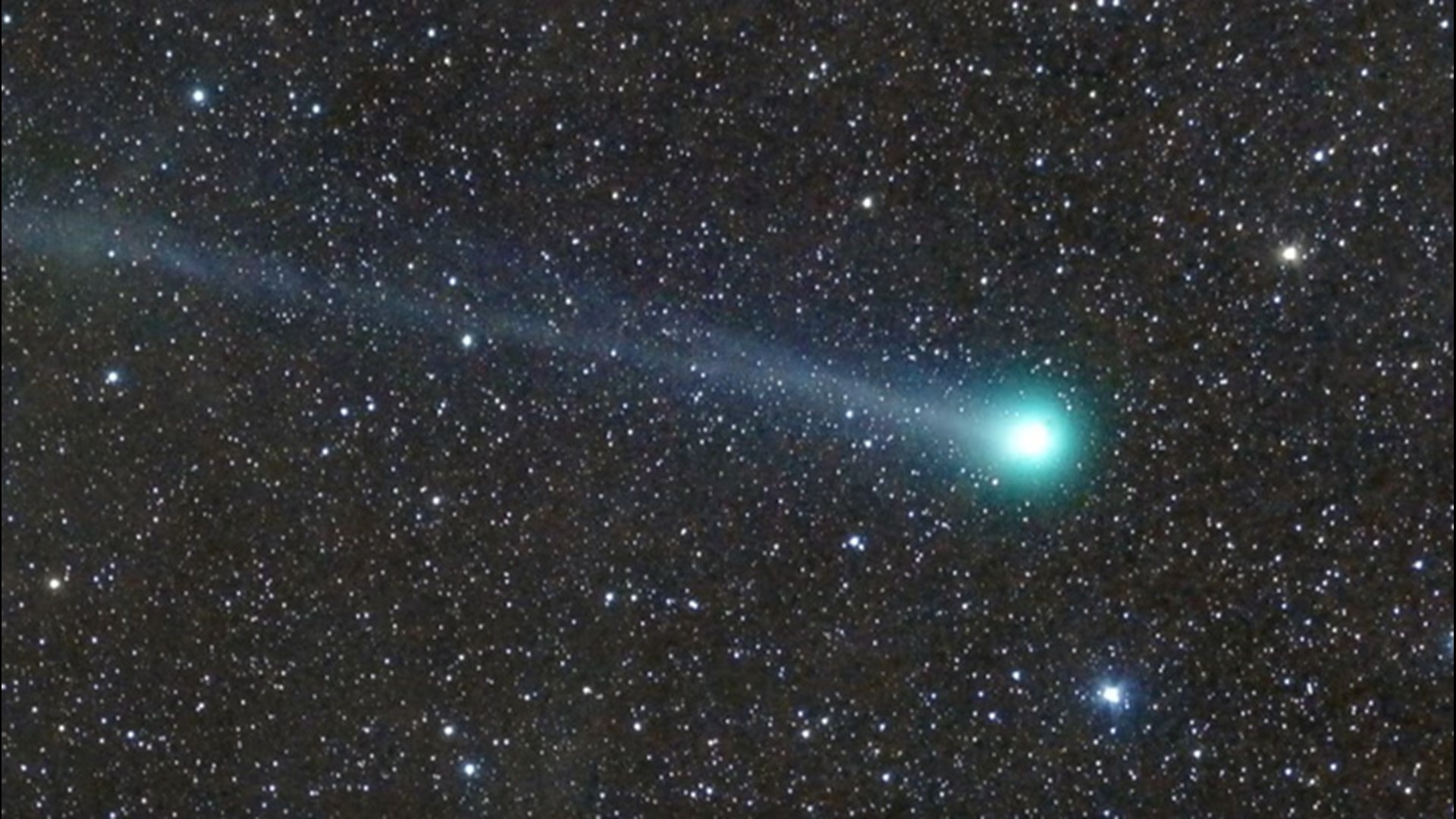The second meteor shower in as many weeks will dazzle the eyes of stargazers around the globe, but the light show will be battling against the glow of a nearly full moon when it reaches its peak.
The Eta Aquarids is an annual meteor shower in early May, and this year, it reached its climax on Monday night and the pre-dawn hours of Tuesday morning.
"This shower happens to be one of if not the best in the Southern Hemisphere," AccuWeather Astronomy Blogger Dave Samuhel said. "It is a moderate shower for the Northern Hemisphere."
People living south of the equator may count as many as 40 shooting stars per hour at the height of the celestial light show, the American Meteor Society (AMS) said. This includes Australia, New Zealand, Africa and South America.
"From the equator northward, they usually only produce medium rates of 10-30 per hour just before dawn," the AMS added.
This year, the meteor shower peaked just two nights before the final supermoon of 2020. The bright moon may make it difficult to see some of the fainter meteors, but it should not completely wash out the shower.
Of course, weather and cloud cover will significantly factor into how well sky gazers in different parts of the country are able to witness the meteor shower Monday and Tuesday night.
Onlookers across the southern U.S. and the interior West had the best viewing conditions on Monday night for 2020's iteration of the Eta Aquarids.
The Eta Aquarids will continue to be active on Tuesday night, providing onlookers with another opportunity to see the celestial light show.
Clouds are forecast to become more widespread over the eastern and western U.S., but mainly clear conditions are expected to remain over the Four Corners and southern Plains. Northern New England and most of Florida should also have favorable viewing conditions on Tuesday night.

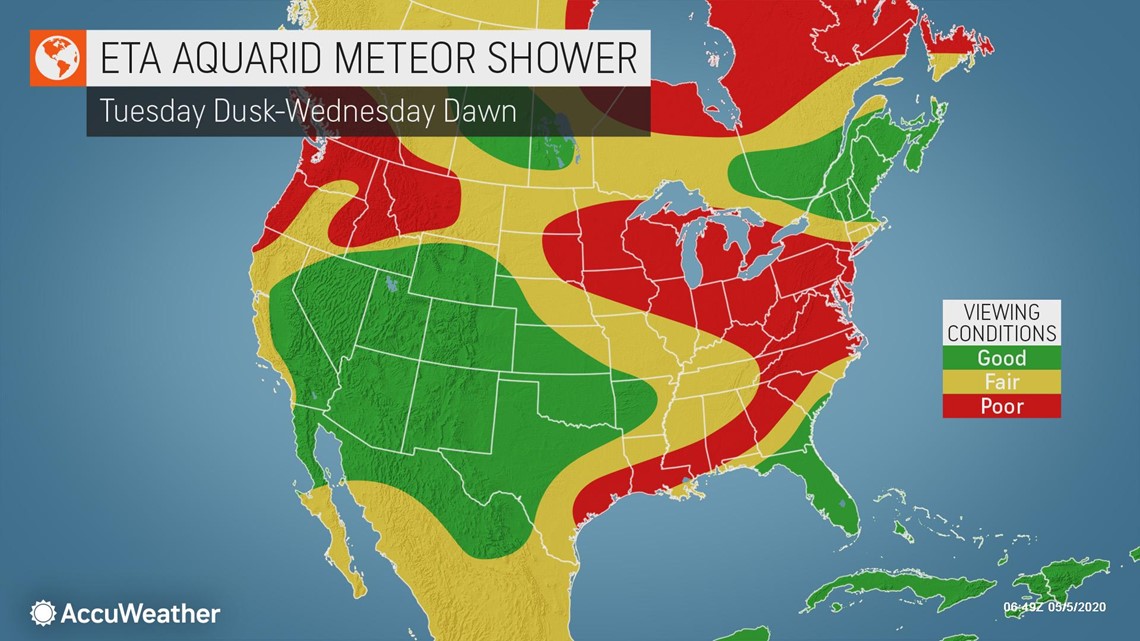
There won't be another major meteor shower until the Delta Aquarids peak in late July.
No special equipment is needed to watch a meteor shower, although people should pack some patience when heading out to spend some time under the stars.
"Give yourself a solid hour to look for meteors. Get comfortable. Lay down on a blanket, or a reclining chair," Samuhel said.
People should also avoid looking toward the moon, which will be above the horizon for most of the night. Looking at the moon can make it harder to see meteors, so try to focus in the darkest part of the sky.

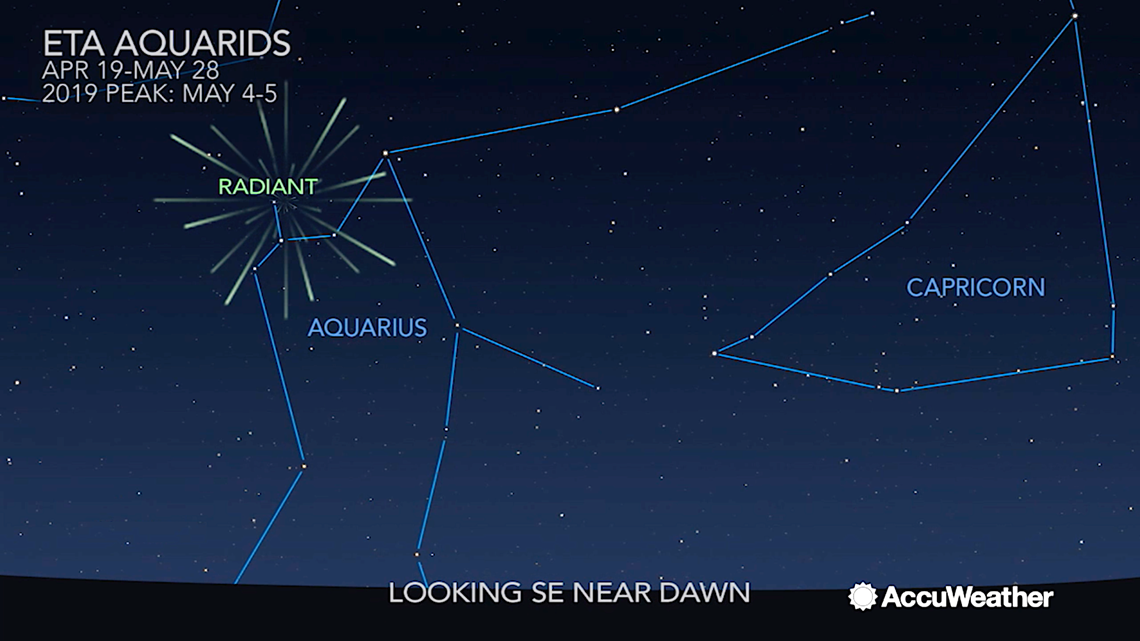
The best time to watch the meteor shower will be after midnight once the shower's radiant point climbs above the horizon.
The radiant point is simply the part of the sky where the meteors originate, but you do not need to look in this direction to spot meteors. However, as the radiant point climbs higher in the sky, more and more meteors will able to be seen.
Many of the meteor showers throughout the year are caused by debris left behind by comets when they visit the inner solar system. When this debris enters the Earth's atmosphere, it burns incredibly bright for a few brief seconds.
"The majority of visible meteors are caused by particles ranging in size from about that of a small pebble down to a grain of sand, and generally weigh less than 1-2 grams," the AMS said.
The debris that causes the Eta Aquarids is actually dust left behind by one of the most famous comets - Halley's Comet.
Halley's Comet only orbits the sun once every 75 years, but each year in early May, the Earth passes through some of the debris that it left behind.
"The Eta Aquarids are one of two meteor showers sparked by Halley's comet. The other being the Orionids in October. "

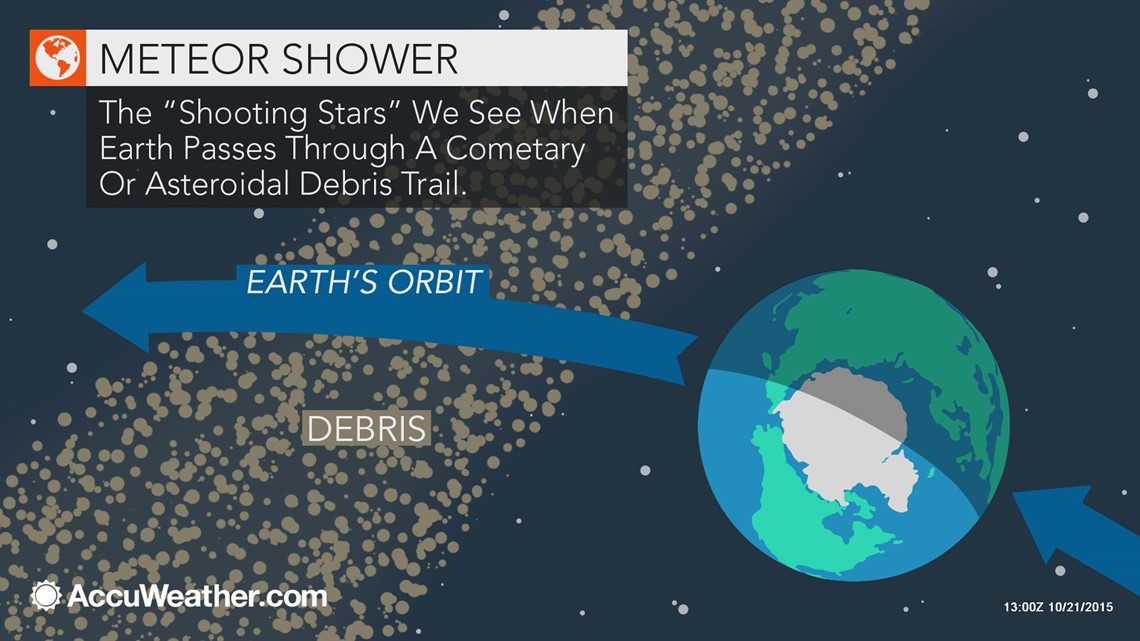
People that miss out on the Eta Aquarids will need to wait a few months before the next opportunity to catch a meteor shower.
According to the AMS, the next major meteor shower will not peak until late July.
Related video: Top astronomy events for May 2020

